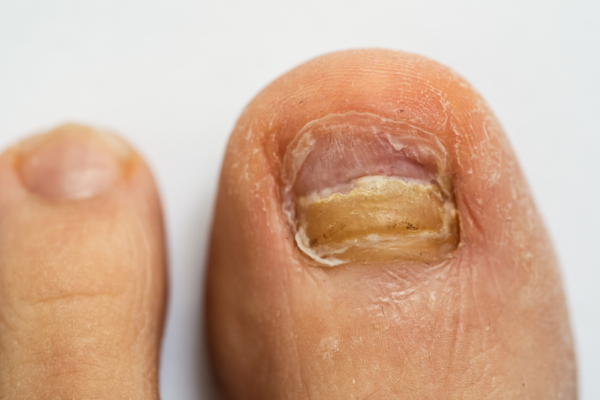The Facts:
Fungal nail infections are very common, it is also known as Onychomycosis. Toenails are seven times more likely to be affected compared to fingernails. We often find that people attend the clinic after spending lots of time and money on treatments that have not helped or the infection regresses quickly after stopping treatment.
Podiatrists are a great first point of contact for nail infections, with the ability to provide you with a diagnosis alongside delivering experts advise and treatment.
Signs and Symptoms:
The infection can affect the superficial layer of the nail plate, the nail bed and/or the root of the nail. You may suspect a fungal infection if one or more of your nails:
- Appears to be abnormal or discoloured
- Have white, yellow or brown streaks down the nail
- Are becoming thick, chalky, crumbly and/or lifting from the nail bed
- Have disorganised debris underneath the nail
Diagnosis:
In most cases, we diagnose the nail clinically, just by looking at the nail. Other causes of changes in the nail appearance includes damage, psoriasis and Lichen Planus. Correct diagnosis is often recommended when the diagnosis is not clear.
At Green Podiatry & Chiropody we offer two types of nail testing which allows us to confirm whether fungus is present or not. Correct diagnosis is important for us to put you on a personalised treatment plan.
Treatment:
The longer that you leave the nail infection, the more of the nail plate becomes infected, this usually means the more difficult the infection is to treat. Infection is not known to spontaneously clear without anti-fungal treatment. Treatment options are often patient specific depending on your medical status, the nail presentation and your personal preferences.
We can direct you to the most effective over the counter treatments, discuss oral medications and we provide a treatment called Nail Fenestration. This is where we painlessly drill holes in the nail plate where an anti-fungal solution can be sprayed on the nail, to better penetrate the source of the infection.
In cases where our patients have chosen not to treat the problem, we can trim and tidy the nail resulting in a more comfortable and less embarrassing problem.
Here are our top tips to minimise fungal infections:
- Washing socks on a high wash
- Treating the skin with an antifungal cream to reduce fungal load on the skin
- Drying your feet properly after showering and bathing
- Breathable leather shoes or trainers, avoid shoes made from man-made materials where possible
- Wearing absorbent cotton or Bamboo socks to wick away excessive moisture
- Well-fitting shoes and trainers to minimise damage


